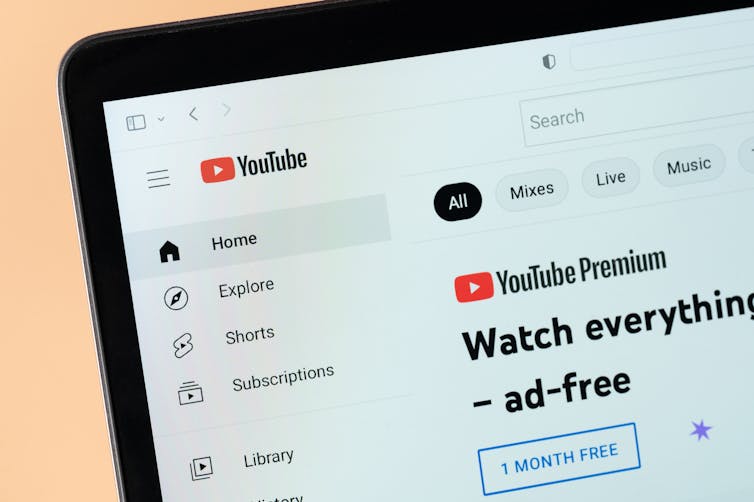
It is difficult to spend any time on the internet these days without being inundated with advertisements.
In Australia alone this year, online advertising has increased 9.3% and is now worth more than A$3.7 billion. That is a lot more pop-ups and promotions in our daily lives – and as data scientists and marketing specialists chase more short-term sales targets, there’s bound to be more.
Not all advertising is bad – especially if it saves you money and targets your interests. But you may have noticed as you’ve scrolled through social media or read the news online recently that the ads you see are often impersonal and irrelevant to your interests. They are also sometimes dangerous, promoting harmful and illegal medical products.
All of this goes against the common assumption that technological advancements combined with increased personal data collection would lead to a better online experience for people. Instead, it seems as though online advertising is making peoples’ experience on the internet worse. So, why is this happening? And is there anything that can be done about it?
Annoying ads
People are more likely to engage with online advertising if it is personalised and relevant to them. Unsurprisingly, the opposite is also true: people find general display and mass-targeted pop-up ads annoying. These kinds of ads are so annoying they will often lead to people leaving a website.
This is not only bad for people’s experiences online – it is also bad for business.
And yet irrelevant advertising is widespread on the internet. For example, a 2022 study found that on Facebook, nearly one-third of advertisements were irrelevant, despite the social media platform’s intensive user profiling system.
Another reason for ads being annoying is that they can invade our personal social media space and threaten our privacy, if they are too personalised. Do I want others looking over my shoulder at my screen to know I’m slowly losing my hair?
People express psychological ownership of their Facebook and Instagram accounts, even though in effect they – the user – are the product. They find personalised advertisements invasive, and generalised banner advertising obtrusive.
But these effects can be reduced if consumer privacy is respected. And if people have the ability to opt in or out of receiving advertising, research shows personalised advertising will be effective.
Imagine receiving personalised ads about the latest tour of your favourite musician – and being able to opt out of the ads once you’ve bought tickets to the gig.
The issue is that there is no opt-out clause on many social media sites.
What’s driving the flood of annoying ads?
One of the main reasons for the flood of rubbish ads is that nearly all advertising online is now automated. For example, in the United States, 90% of banner ads, pop-ups and other digital display ads are automated.
Often called “programmatic advertising”, these ads are automatically placed on websites and social media feeds without human intervention. Total spend on these ads has grown from US$4.99 billion in 2013 to US$156.8 billion today.
The basis for the ads being present can be context (something related to what you are viewing) or behavioural (related to your browsing history and search terms).
Without detailed consumer research asking you about your motivations and interests, it is hard for a program to infer them just from your browsing history. But that doesn’t really matter because the ads are cheap to produce (even if they have a low hit rate).
This high prevalence of programmatic advertising occurs online as there are no legal restrictions on the number of adverts people are exposed to. This is very different to traditional media such as television.

Ads don’t have to be so annoying
Some users take back control from online ads by installing ad-blocker software. These can be free versions in the form of a browser extension, or more advanced versions with a subscription fee.
Some companies such as YouTube have made a business model out of making it possible for people to opt out of advertising. To achieve this state of bliss, you need to pay an annual subscription fee.
But for those of us who can’t or won’t opt out, companies can also find simple ways to make ads less annoying – and more effective for the advertisers.
For example, Google Chrome has stopped the use of auto-play video. This gives people more control over the advertising they do encounter online.
Another way to achieve this is by allowing users greater interactivity with advertisements. One example is carousel advertising, where you can scroll left and right when reading content. Interactive advertising increases one’s feelings of control and leads to greater engagement.
Creating engaging and relevant online advertising is more costly and takes longer to produce. But it’s likely to be more effective – and much less annoying.
Steve D'Alessandro does not work for, consult, own shares in or receive funding from any company or organisation that would benefit from this article, and has disclosed no relevant affiliations beyond their academic appointment.
This article was originally published on The Conversation. Read the original article.







